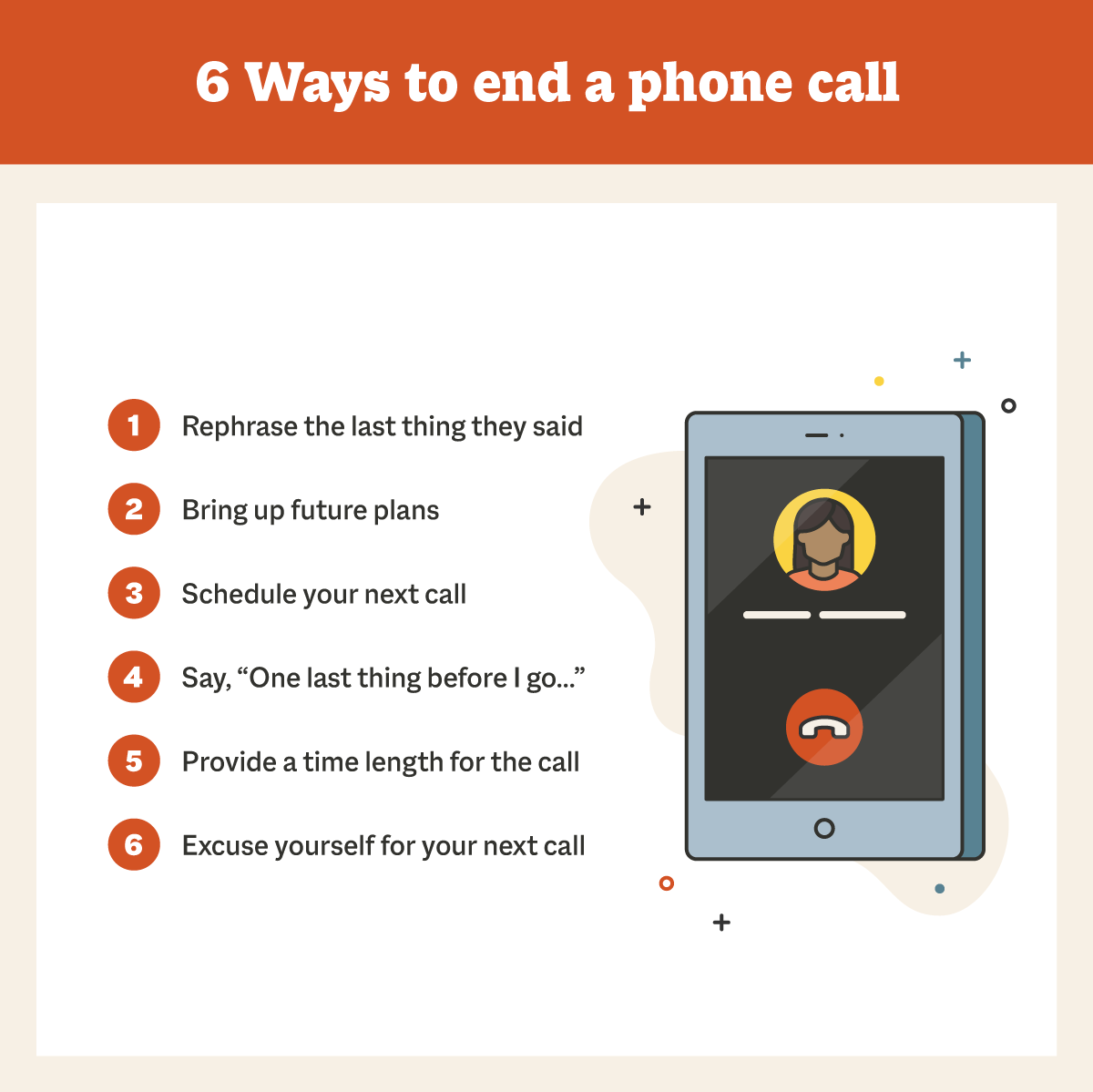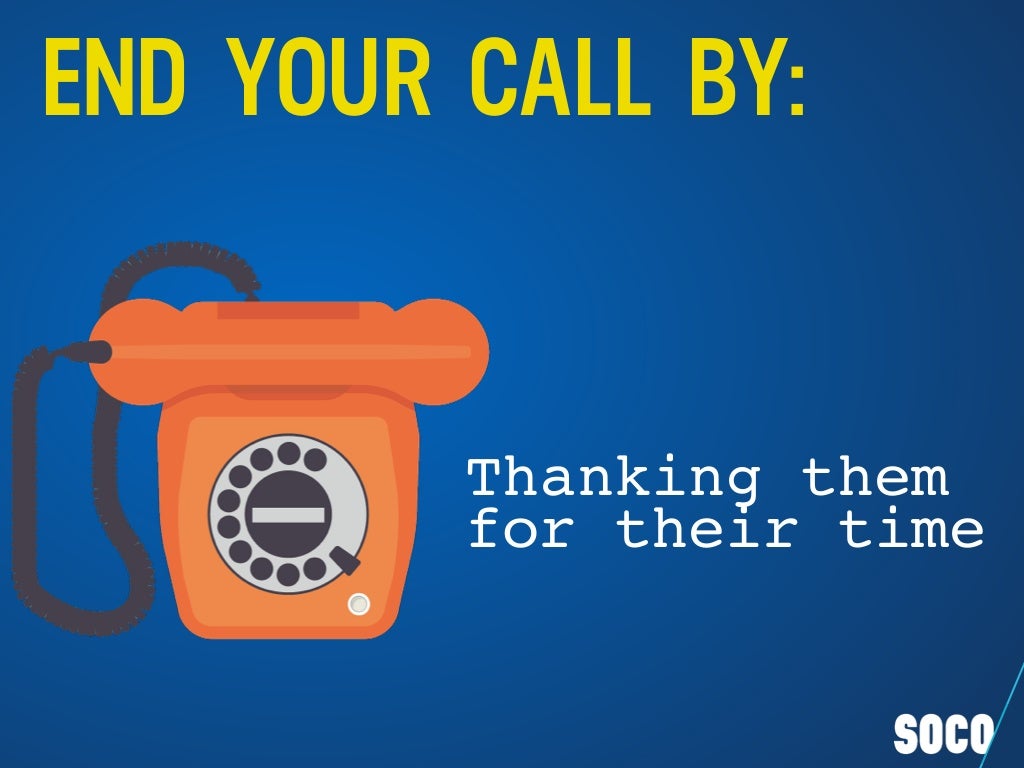What’s the best way to end a business phone call? This seemingly simple question holds the key to leaving a lasting positive impression. A well-executed call closure not only signifies professionalism but also ensures clarity on next steps and action items. This guide delves into the art of ending business calls effectively, providing practical strategies and examples to help you make every conversation count.
From crafting professional closing phrases to summarizing key discussion points and confirming action items, we’ll explore various techniques for a smooth and efficient call conclusion. We’ll also address handling unexpected interruptions and delays, ensuring you maintain a positive professional image, even in challenging situations. Learn how to seamlessly transition from conversation to closure, leaving your clients and colleagues feeling informed and valued.
Professional Closing Phrases

Ending a business phone call professionally is crucial for maintaining a positive impression and ensuring clear follow-up. The closing phrase you choose should reflect the overall tone of the conversation and leave the recipient feeling informed and valued. Choosing the right words can significantly impact the perceived professionalism of your business interactions.
Professional Closing Phrases for Various Contexts
Selecting the appropriate closing phrase depends on the context of the call. A formal call requires a different approach than a more casual one. Consistency in your closing remarks helps build a professional image.
Here are five examples of professional closing phrases suitable for various business contexts:
- “Thank you for your time. I look forward to our next conversation.” (Suitable for most formal contexts)
- “Thanks for calling. Have a great day.” (Suitable for less formal contexts and shorter calls)
- “I appreciate you taking my call. Please let me know if you have any further questions.” (Suitable for calls where assistance was provided)
- “This has been helpful. I’ll be in touch soon to discuss the next steps.” (Suitable for calls leading to further action)
- “Thanks for your input. I’ll send you a follow-up email summarizing our discussion.” (Suitable for calls involving multiple points of discussion)
Closing Phrases Expressing Gratitude and Reinforcing Next Steps
Expressing gratitude and clearly outlining next steps helps to solidify the call’s outcome and ensures both parties are on the same page. This demonstrates professionalism and reinforces the business relationship.
Here are three examples of closing phrases that express gratitude and reinforce the next steps:
- “Thank you for your time and valuable insights. I will send you the proposal by end of day tomorrow, as discussed.”
- “I appreciate you taking the time to explain this to me. I’ll implement the changes you suggested and will follow up with you on Monday.”
- “Thanks again for your help. I’ll be sending you the updated document by Friday, and we can schedule a brief follow-up call next week to review it.”
Formal vs. Informal Closing Phrases
The level of formality in your closing should align with the overall tone of the conversation and your relationship with the recipient. Overly informal closings in formal settings can be perceived as unprofessional, while overly formal closings in casual settings may seem stiff and unnatural.
The following table compares formal and informal closing phrases:
| Category | Formal | Informal | Context |
|---|---|---|---|
| Closing Phrase | “Thank you for your time and consideration.” | “Thanks for your help!” | Initial contact with a potential client vs. regular communication with a colleague. |
| Closing Phrase | “I look forward to receiving your response at your earliest convenience.” | “Let me know what you think.” | Following up on a proposal vs. a quick question. |
| Closing Phrase | “Have a pleasant day.” | “Have a good one!” | Concluding a formal business call vs. a quick call with a known contact. |
Summarizing Key Discussion Points
Effectively summarizing key discussion points before ending a business call ensures clarity, avoids misunderstandings, and leaves a professional impression. A concise summary confirms mutual understanding and provides a clear action plan for both parties involved. It demonstrates your attentiveness and commitment to efficiency.
Summarizing key points efficiently involves a structured approach that prioritizes conciseness and clarity. This ensures that all essential information is conveyed without unnecessary detail, leaving the recipient with a clear understanding of the call’s outcome and next steps. This method also demonstrates professionalism and respect for the other party’s time.
Step-by-Step Guide to Summarizing Key Discussion Points
Before beginning your summary, take a moment to mentally review the conversation’s main themes. Identify the key decisions, agreements, and action items that emerged during the call. This brief pause allows you to formulate a coherent and accurate summary.
- Restate the Call’s Purpose: Begin by briefly reiterating the primary objective of the call. For example, “As we discussed, the purpose of this call was to finalize the marketing strategy for the Q4 product launch.”
- Highlight Key Decisions: Concisely state the major decisions reached. Use clear and direct language, avoiding jargon. For instance, “We agreed on a social media campaign focusing on video content and influencer marketing.”
- Artikel Action Items: Clearly identify who is responsible for each action item and its corresponding deadline. For example, “You will send the revised marketing budget by Friday, and I will prepare the social media content calendar by next Monday.”
- Confirm Next Steps: Briefly describe the next steps in the process, including any scheduled follow-up calls or meetings. For instance, “Our next meeting to review the campaign’s progress will be held on October 26th.”
- Offer a Closing Statement: End with a professional closing statement that re-emphasizes the key takeaways and expresses appreciation for the other party’s time. For example, “Thank you for your time and collaboration. I look forward to our next meeting.”
Example Summary of a Hypothetical Business Call
Let’s imagine a call between Sarah (Marketing Manager) and David (Sales Manager) to discuss a new product launch.
Hypothetical Call Details: The call focused on finalizing the marketing strategy for a new software product. They discussed the target audience, marketing channels (social media, email marketing, paid advertising), budget allocation, and key performance indicators (KPIs). They agreed on a social media campaign with a focus on video content and influencer marketing, with a budget of $10,000. David agreed to provide sales data by Friday, and Sarah will prepare the social media content calendar by Monday. They scheduled a follow-up meeting for October 26th to review the campaign’s progress.
Detailed Summary: “David, thanks for taking the time to discuss the marketing strategy for the new software launch. As we agreed, the main goal was to finalize the marketing plan. We decided on a social media campaign emphasizing video content and influencer marketing, with a budget of $10,000. You’ll provide the sales data by Friday, and I’ll prepare the content calendar by Monday. Our next meeting to review progress will be on October 26th. Thanks again for your collaboration.”
Confirming Next Steps and Action Items
Clearly confirming next steps and action items at the end of a business phone call is crucial for ensuring accountability and driving progress. Failing to do so can lead to misunderstandings, missed deadlines, and ultimately, project failure. A concise and thorough recap solidifies understanding and sets the stage for successful collaboration.
Confirming action items involves explicitly stating what needs to be done, by whom, and by when. This requires a structured approach to avoid ambiguity and ensure everyone is on the same page. This section details effective strategies for confirming next steps and action items, providing examples and best practices to enhance clarity and accountability.
Methods for Confirming Action Items
Effective confirmation requires a multi-faceted approach. Simply stating “We’ll follow up” is insufficient. Instead, employ specific language that clearly defines responsibilities and deadlines. This can involve verbally summarizing agreed-upon tasks, using a shared document, or sending a follow-up email. Each method offers distinct advantages depending on the complexity of the action items and the communication preferences of the parties involved.
For example, you might say: “So, to summarize, I’ll send you the revised proposal by end of day tomorrow, and you’ll review it and let me know your feedback by Friday afternoon.” This clearly Artikels both parties’ responsibilities and associated deadlines. Alternatively, if multiple action items are involved, you could say, “Let’s review the action items: First, I will prepare the presentation; second, you will provide the data by Wednesday; and third, we will schedule a meeting next week to discuss the results. Does that sound right?” This method allows for immediate clarification and correction of any misunderstandings.
Best Practices for Confirming Action Items
To ensure clarity and accountability, follow these best practices when confirming action items:
- Be Specific: Avoid vague language. Clearly define each task, including the desired outcome.
- Assign Ownership: Explicitly state who is responsible for each action item.
- Set Deadlines: Establish realistic and achievable deadlines for each task.
- Use a Shared Document (Optional): For complex projects, using a shared document to record action items ensures a centralized and easily accessible record.
- Send a Follow-up Email: Summarize the key discussion points and action items in a concise email. This serves as a written record and minimizes the risk of miscommunication.
- Confirm Understanding: After outlining action items, ask for confirmation to ensure both parties are in agreement. Phrases like “Does that sound right?” or “Can you confirm you’ve understood?” are helpful.
- Maintain a Consistent Process: Establish a consistent process for documenting and confirming action items across all business calls.
Handling Unexpected Interruptions or Delays
Unexpected interruptions and schedule changes are inevitable in the fast-paced world of business. Maintaining professionalism and ensuring clear communication during these moments is crucial for preserving positive business relationships and project timelines. Knowing how to gracefully navigate these situations can significantly impact your professional image and the success of your business dealings.
Handling unexpected interruptions or delays during a call’s conclusion requires tact and efficiency. The goal is to minimize disruption, reschedule effectively, and leave a positive lasting impression. This involves acknowledging the interruption, offering a brief explanation (without over-sharing), and swiftly proposing a solution. Similarly, addressing unforeseen delays or changes in plans requires clear communication and proactive problem-solving.
Strategies for Handling Unexpected Interruptions
Unexpected interruptions, such as a ringing phone or a colleague needing urgent assistance, can derail the smooth conclusion of a call. The key is to handle these interruptions with politeness and efficiency, minimizing any disruption to the flow of the conversation. A simple phrase like, “Excuse me for a moment, I have another call coming in,” followed by a brief pause and a return to the conversation, can effectively manage such situations. If the interruption is more substantial, briefly explain the situation and suggest rescheduling if necessary. Always prioritize the original caller, acknowledging their time and importance.
Methods for Addressing Delays or Changes in Plans
When unforeseen circumstances necessitate changes to previously agreed-upon plans or timelines, transparency and proactive communication are vital. Instead of abruptly announcing changes, explain the situation concisely and empathetically. Offer alternative solutions or adjusted timelines, demonstrating your commitment to finding a mutually agreeable resolution. For instance, if a promised deliverable is delayed, clearly explain the reason for the delay and propose a revised delivery date, offering proactive updates along the way.
Examples of Rescheduling a Follow-Up Call or Meeting, What’s the best way to end a business phone call
Here are three examples of how to reschedule a follow-up call or meeting due to unforeseen circumstances:
Example 1: “I apologize, but due to an unexpected urgent matter that has arisen, I need to reschedule our follow-up call. Would Tuesday at 2 PM work for you? If not, please let me know what time suits you best.” This example is direct, apologetic, and offers a specific alternative time.
Example 2: “I’m so sorry, but a conflict has come up on my end. I’ve been unexpectedly called away for a client emergency and am unable to make our scheduled meeting at 10 am. I’d be happy to propose an alternative time; would Thursday afternoon work for you?” This demonstrates empathy and offers a solution.
Example 3: “I apologize for the short notice, but due to unforeseen technical difficulties, I need to postpone our scheduled meeting. I’ll send you a new calendar invite shortly with a few alternative times. I appreciate your understanding.” This example is concise, acknowledges the inconvenience, and promises a prompt solution.
Ending the Call Politely and Efficiently: What’s The Best Way To End A Business Phone Call

A polite and efficient call closure is crucial for projecting professionalism and maintaining positive business relationships. A well-executed ending leaves a lasting positive impression, fostering trust and encouraging future collaborations. Conversely, a rushed or abrupt conclusion can damage rapport and leave the other party feeling undervalued. The closing moments of a call are as important as the initial introduction.
Efficient call endings demonstrate respect for the other party’s time and showcase your organizational skills. They also ensure all necessary information has been exchanged and agreed-upon actions are clear. This reduces the likelihood of follow-up calls to clarify details or resolve misunderstandings, improving overall productivity.
Methods for Ending a Business Call
Several methods contribute to a polished and efficient call conclusion. Employing a combination often yields the best results. Simply ending with a perfunctory “goodbye” is insufficient; a more considered approach is necessary. Summarizing key discussion points provides a concise recap, ensuring both parties are on the same page. Confirming next steps and action items establishes accountability and clarifies expectations. Finally, using a professional closing phrase adds a touch of formality and reinforces the positive interaction.
Flowchart Illustrating Professional Call Closure
The following flowchart visually represents the steps involved in ending a business call professionally and efficiently. Imagine a rectangular box for each step, connected by arrows indicating the flow.
Step 1: Signal the Conclusion: Begin by using a transitional phrase such as, “Before we conclude,” or “To summarize our discussion.”
Step 2: Summarize Key Points: Briefly reiterate the main points covered during the conversation. For example, “So, we’ve agreed on the project timeline, the budget allocation, and the key performance indicators.”
Step 3: Confirm Next Steps and Action Items: Clearly state who is responsible for what and by when. For instance, “I’ll send you the contract by the end of the day, and you’ll review it by Friday.”
Step 4: Express Appreciation: Thank the other party for their time and participation. A simple “Thank you for your time and input” goes a long way.
Step 5: Use a Professional Closing Phrase: Employ a phrase like “Have a great day,” “I look forward to our next conversation,” or “It was a pleasure speaking with you.”
Step 6: End the Call: Gracefully conclude the call, allowing the other party to hang up first if possible. Avoid abrupt disconnections.
Visual Aids for Effective Closing

Visual aids can significantly enhance the effectiveness of closing a business phone call by providing a concise summary and ensuring clarity on next steps. A well-designed visual representation transforms an otherwise verbal agreement into a tangible record, minimizing misunderstandings and fostering trust. This improves efficiency and leaves a positive lasting impression.
Visual aids such as checklists and infographics can streamline the call-ending process. These tools provide a structured overview of key discussion points, agreed-upon action items, and deadlines, eliminating the need for lengthy verbal recaps. This ensures both parties are on the same page, reducing the likelihood of errors or omissions.
Checklist and Infographic Examples
A well-structured closing summary checklist could be visually represented as a simple table. The first column would list key discussion points, the second column would note the decisions or agreements made regarding each point, and the third column would detail any assigned action items and responsible parties, including deadlines. An infographic could use icons and concise bullet points to summarize the same information, presenting a more visually appealing and easily digestible format. For instance, a green checkmark could denote completed tasks, while a calendar icon could indicate deadlines. Color-coding could be used to differentiate responsibilities among team members.
Visual Representation of Confirming Next Steps and Action Items
A simple flowchart could effectively illustrate the process of confirming next steps and action items. The flowchart could begin with a box labeled “Call Conclusion,” branching into separate paths for each action item. Each path would lead to boxes detailing the action item itself, the responsible party, and the deadline. These boxes could then connect to a final box labeled “All Action Items Confirmed,” signifying the completion of the call’s closing process. For example, one branch might represent “Send proposal to client (John Doe, by Friday),” another “Schedule follow-up call (Jane Smith, next Tuesday),” and so on. The visual nature of the flowchart provides a clear, step-by-step overview of the agreed-upon actions, making it easily understandable and referenceable.






